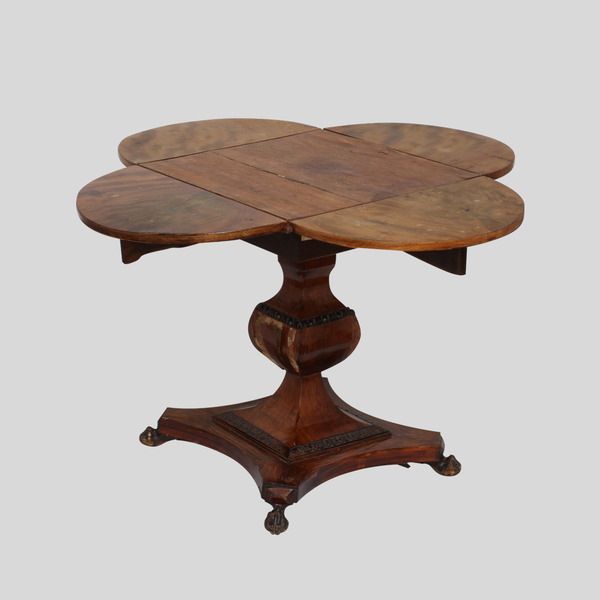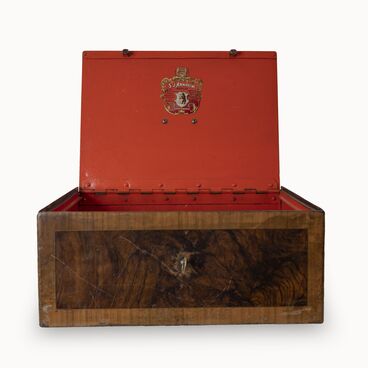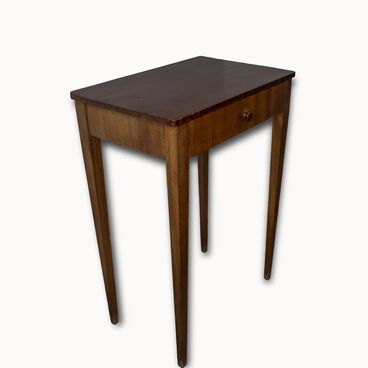The collection of the Decembrists House Museum includes a table featuring one supporting column with four cabriole legs. It has four folding tabletops that significantly increase the area of working space once lifted. The supporting structure is shaped like a Greek amphora vase. This design was especially popular in the mid-19th century.
Round one-legged tables have been known since antiquity. Back then, they were made of marble and had a massive, carved base and a rather wide tabletop. Such tables were used for eating outdoors, explaining the choice of material that varied from stone to metal. In the early Baroque era, wooden dining tables on one massive leg, intended for small groups of people, came into widespread use.
Later, the design of round dining tables continued to change. One of its smaller forms was a guéridon table. They came into fashion during the reign of the “Sun King” Louis XIV and served for placing candelabra and flowerpots or for serving snacks and drinks in the king’s palace. In Russia, the guéridon was transformed into a tea table that was used as a stand for a samovar.
Russian tea culture is a whole set of traditions that apply to the conversation, table setting, and treats during tea ceremonies. Tea tables were laid well in advance. Well-off people had several samovars, and each of them had its own service. Apart from a hostess, only her grown-up daughter could pour tea for guests. For example, in the novel “Eugene Onegin”, Olga pours tea for the guests at the Larins’,
Round one-legged tables have been known since antiquity. Back then, they were made of marble and had a massive, carved base and a rather wide tabletop. Such tables were used for eating outdoors, explaining the choice of material that varied from stone to metal. In the early Baroque era, wooden dining tables on one massive leg, intended for small groups of people, came into widespread use.
Later, the design of round dining tables continued to change. One of its smaller forms was a guéridon table. They came into fashion during the reign of the “Sun King” Louis XIV and served for placing candelabra and flowerpots or for serving snacks and drinks in the king’s palace. In Russia, the guéridon was transformed into a tea table that was used as a stand for a samovar.
Russian tea culture is a whole set of traditions that apply to the conversation, table setting, and treats during tea ceremonies. Tea tables were laid well in advance. Well-off people had several samovars, and each of them had its own service. Apart from a hostess, only her grown-up daughter could pour tea for guests. For example, in the novel “Eugene Onegin”, Olga pours tea for the guests at the Larins’,





